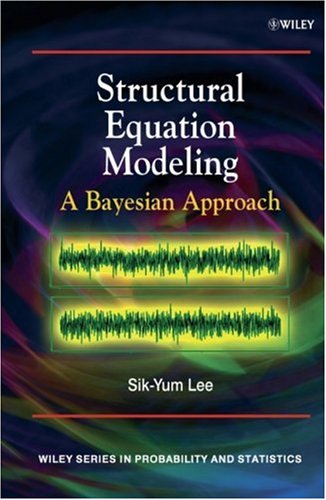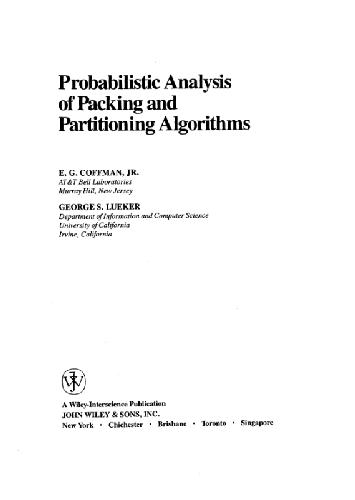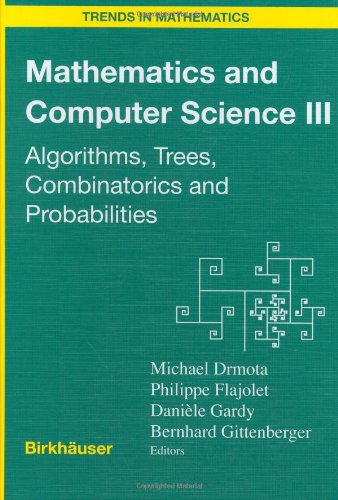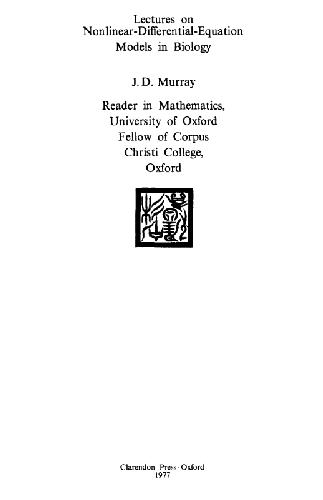Sik-Yum Lee9780470024232, 0470024232
Table of contents :
Structural Equation Modeling……Page 4
Contents……Page 10
About the Author……Page 14
Preface……Page 16
1.1 Standard Structural Equation Models……Page 20
1.2 Covariance Structure Analysis……Page 21
1.3 Why a New Book?……Page 22
1.4 Objectives of the Book……Page 23
1.5 Data Sets and Notations……Page 25
Appendix 1.1……Page 26
References……Page 29
2.1 Introduction……Page 32
2.2 Exploratory Factor Analysis……Page 34
2.3 Confirmatory and Higher-order Factor Analysis Models……Page 37
2.4 The LISREL Model……Page 41
2.5 The Bentler–Weeks Model……Page 45
2.6 Discussion……Page 46
References……Page 47
3.1 Introduction……Page 50
3.2 Definitions, Notations and Preliminary Results……Page 52
3.3 GLS Analysis of Covariance Structure……Page 55
3.4 ML Analysis of Covariance Structure……Page 60
3.5 Asymptotically Distribution-free Methods……Page 63
3.6 Some Iterative Procedures……Page 66
Appendix 3.1: Matrix Calculus……Page 72
Appendix 3.2: Some Basic Results in Probability Theory……Page 76
Appendix 3.3: Proofs of Some Results……Page 78
References……Page 84
4.1 Introduction……Page 86
4.2 Basic Principles and Concepts of Bayesian Analysis of SEMs……Page 89
4.3 Bayesian Estimation of the CFA Model……Page 100
4.4 Bayesian Estimation of Standard SEMs……Page 114
4.5 Bayesian Estimation via WinBUGS……Page 117
Appendix 4.1: The Metropolis–Hastings Algorithm……Page 123
Appendix 4.2: EPSR Value……Page 124
Appendix 4.3: Derivations of Conditional Distributions……Page 125
References……Page 127
5.1 Introduction……Page 130
5.2 Bayes Factor……Page 132
5.3 Path Sampling……Page 134
5.4 An Application: Bayesian Analysis of SEMs with Fixed Covariates……Page 139
5.5 Other Methods……Page 146
5.6 Discussion……Page 149
Appendix 5.1: Another Proof of Equation (5.10)……Page 150
Appendix 5.2: Conditional Distributions for Simulating (θ, Ω/Υ, T)……Page 152
References……Page 155
6.1 Introduction……Page 158
6.2 The Basic Model……Page 161
6.3 Bayesian Estimation and Goodness-of-fit……Page 163
6.4 Bayesian Model Comparison……Page 174
6.5 Application 1: Bayesian Selection of the Number of Factors in EFA……Page 178
6.6 Application 2: Bayesian Analysis of Quality of Life Data……Page 183
References……Page 191
7.1 Introduction……Page 194
7.2 Bayesian Analysis……Page 196
7.3 Analysis of a Multivariate Probit Confirmatory Factor Analysis Model……Page 205
7.4 Discussion……Page 209
Appendix 7.1: Questions Associated with the Manifest Variables……Page 210
References……Page 211
8.1 Introduction……Page 214
8.2 Bayesian Analysis of a Nonlinear SEM……Page 216
8.3 Bayesian Estimation of Nonlinear SEMs with Mixed Continuous and Ordered Categorical Variables……Page 234
8.4 Bayesian Estimation of SEMs with Nonlinear Covariates and Latent Variables……Page 239
8.5 Bayesian Model Comparison……Page 249
References……Page 258
9.1 Introduction……Page 262
9.2 A Two-level Nonlinear SEM with Mixed Type Variables……Page 263
9.3 Bayesian Estimation……Page 266
9.4 Goodness-of-fit and Model Comparison……Page 274
9.5 An Application: Filipina CSWs Study……Page 278
9.6 Two-level Nonlinear SEMs with Cross-level Effects……Page 286
9.7 Analysis of Two-level Nonlinear SEMs using WinBUGS……Page 294
Appendix 9.1: Conditional Distributions: Two-level Nonlinear SEM……Page 298
Appendix 9.2: MH Algorithm: Two-level Nonlinear SEM……Page 302
Appendix 9.3: PP p-value for Two-level NSEM with Mixed Continuous and Ordered-categorical Variables……Page 304
Appendix 9.5: Conditional Distributions: SEMs with Cross-level Effects……Page 305
Appendix 9.6: The MH algorithm: SEMs with Cross-level Effects……Page 308
References……Page 309
10.1 Introduction……Page 312
10.2 The Multisample Nonlinear Structural Equation Model……Page 313
10.3 Bayesian Analysis of Multisample Nonlinear SEMs……Page 316
10.4 Numerical Illustrations……Page 321
Appendix 10.1: Conditional Distributions: Multisample SEMs……Page 332
References……Page 335
11.1 Introduction……Page 338
11.2 Finite Mixtures in SEMs……Page 340
11.3 Bayesian Estimation and Classification……Page 342
11.4 Examples and Simulation Study……Page 349
11.5 Bayesian Model Comparison of Mixture SEMs……Page 363
Appendix 11.1: The Permutation Sampler……Page 370
References……Page 371
12.1 Introduction……Page 374
12.2 A General Framework for SEMs with Missing Data that are MAR……Page 376
12.3 Nonlinear SEM with Missing Continuous and Ordered Categorical Data……Page 378
12.4 Mixture of SEMs with Missing Data……Page 389
12.5 Nonlinear SEMs with Nonignorable Missing Data……Page 394
12.6 Analysis of SEMs with Missing Data via WinBUGS……Page 405
Appendix 12.1: Implementation of the MH Algorithm……Page 408
References……Page 409
13.1 Introduction……Page 412
13.2 The SEM Framework with Exponential Family of Distributions……Page 413
13.3 A Bayesian Approach……Page 417
13.4 A Simulation Study……Page 421
13.5 A Real Example: A Compliance Study of Patients……Page 423
13.6 Bayesian Analysis of an Artificial Example using WinBUGS……Page 430
13.7 Discussion……Page 435
Appendix 13.1: Implementation of the MH Algorithms……Page 436
References……Page 438
14 Conclusion……Page 440
References……Page 444
Index……Page 446







Reviews
There are no reviews yet.